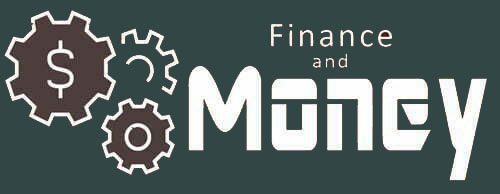So I’m raising money for my startup, Rational Energy. We’re building utility-scale storage so cheap it will turn the renewable energy industry profitable while servicing a $9 trillion market and saving the world to boot. That’s the one-sentence pitch. The elevator version takes 30 seconds and includes arm waving. Call me.
To push this miracle into reality, I attended the NREL Investor Growth Forum in Denver. It’s hosted by the National Renewable Energy Lab, which sounds very official and is. It’s a well-established event, packed with top-tier energy investors and startup founders, crawling with people who wear fleece vests and can move millions with a nod. If you’re trying to raise money in this industry, I strongly recommend attending. Even if you don’t land a check, you’ll leave with a crash course in venture psychology.
Here is what you need to know to survive and even thrive in this kind of high-stakes environment:
1. Nobody Has Time to “Muse”
I originally planned to write about the coolest tech at the show. You know, the one invention that will make the world breathe easier and also do your taxes. But when I asked people what stood out to them, they usually said something like, “Oh, you mean this amazing company I already invested in?” And then proceeded to tell me why it was genius.
That makes sense. Nobody here is really in “muse” mode. They’re too busy trying to squeeze life-changing meetings in between protein bars and 3-minute pitches. It’s hard to contemplate the future of energy when you’re mentally calculating how many times you can say “scalable” in one sentence.
2. VCs Are Low-Key Terrified of Entrepreneurs
Let’s talk about the social engineering experiment that is this forum. The whole setup is designed to keep VCs from being mobbed like the last donut at a startup brunch. Probably wise, since entrepreneurs outnumber VCs roughly 50 to 1. There’s a strict system, you book one-on-one meetings in advance.
But here’s the plot twist: the VCs can reject you.
From the founder side, it’s stressful. You’re in a room full of people who could change your life, and you’re mostly not allowed to talk to them.
Shocking, I know. I had done my homework, found only the VCs who fit my stage and tech, and still got over 15 rejections. I did end up with 8 meetings on day one. Day two? I had 7 scheduled, and 6 ghosted. Apparently, VCs prefer early exits and airport lounge wine to hearing about my groundbreaking energy storage solution (heavy sigh…).
3. Entrepreneurs Morph into Glitchy Robots
Ask any founder (some of the most intelligent, ambitious and charismatic people on the planet) here to pass the salt and you have a 50-50 chance he will recite his three-minute pitch without pausing to take a breath. Some will scan your badge, realize you can’t fund them, and walk away mid-sentence. In this environment, it takes a solid 10 minutes of abortive conversation with a fellow entrepreneur to get him to act like a regular human being.
They’re not rude, just focused and pre-programmed by stress. Is it any wonder VCs look at us like we’re malfunctioning AI prototypes?
4. Schedule the Smart VCs First
If you get into this game, make a plan to target the smartest people in the room first. Stalk the conference app. Research every VC the second they pop up. Rank them. Prioritize them. Book meetings as early as humanly possible.
The three best meetings I had were with people who already understood the market, the tech, and the chemistry. They were finishing my sentences. They knew the tradeoffs. They knew the lithium issues. They got it. And they (the Holy Grail) asked for more information.
In contrast, the lower ranked ones are looking for reasons to reject you. One junior VC stared at me like I had spinach in my teeth, then declared my company wasn’t a fit (sister, the prototype was done in 1985…). Another tried to be my life coach while clearly misunderstanding everything about my venture. He lectured me on minimum viable product and product-market fit like he was reading from B-school text. And then made me late to my next meeting. Thanks, professor.
The lower-tier folks want to fit you into a box. The top people want to see if you’re worth building a new box for (Hemmingway?).
5. The Booth People Are Still Human
Vendors and service providers? Bless them. They’ll talk to anyone. No pitch deck required. They smile. They hand out free pens. Some even offer useful advice. If you need a moment of sanity in the chaos, head for the booths. They might be the last truly approachable people at the entire event. And they don’t care if you’re pre-seed, post-Series A, or just pretending.
6. The Pitch Contest Was Rigged (By Human Nature)
One of the forum’s main attractions was the pitch contest. A panel of VC judges listened to dozens of pitches, scored them, and chose the winners.
And this is where things got interesting. All the winners were male. Five of the seven could be described as conventionally handsome. The winner? An Asian male—not exactly GQ material (sorry, man), but charismatic, confident, and delivering a pitch like he was selling gold bars. Literally. He pitched gold, showed pictures of gold, promised he could produce more gold from leftover crap. Gold wins.
But here’s the kicker: even if every winner becomes a billion-dollar unicorn, what would be the total impact on renewable energy?
Zero.
None of the winning ideas could actually move the needle on getting us to a fully renewable future. Not one of the winning companies was solving a core issue in renewables. Nothing transformative. Nothing that would meaningfully speed up the energy transition. Just small, incremental improvements.
VC judges don’t trust financial projections anyway, so psychology says it comes down to appearance, charisma and clean slides. This principle is a corollary to Scott Adams quote: If free will exists, why do the tallest candidates with the best hair usually win elections?
To be fair, there were brilliant ideas floating around and I didn’t see every pitch. And make no mistake, the judges were the highly intelligent ones (OK, two them were; I didn’t meet the rest), but the *Ouija board effect was apparent and in human nature is nearly irresistible.
Next Year: My Evil Plan
If I show up next year, I’m bringing Matt Damon to do my pitch and getting McKinsey&Co to format my deck. That should seal the deal. Unless, of course, I’ve already raised the money by then. In which case I’ll be the one ghosting meetings on day two. Full circle.
.
.
.
* for those of you whose education and culture are lacking, the Ouija board is where everyone puts their figure on a small heart-shaped piece of wood, and the nervous energy of the group pushes the wood over letters on the board to spell out the subconscious consensus of the group. The stock market works this way too…





